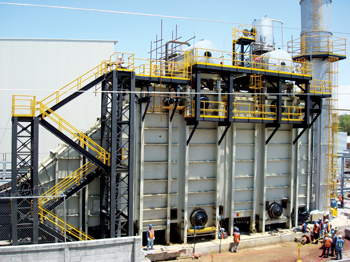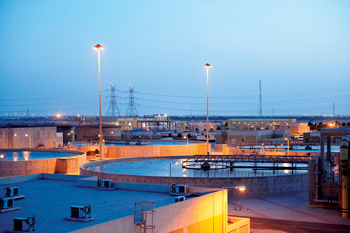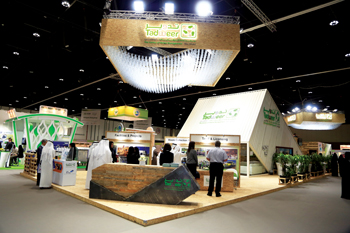
 The waste heat recovery systems offer energy savings
The waste heat recovery systems offer energy savings
INDUSTRIAL waste heat recovery is the process of capturing and reusing the waste heat and gases arising from the industrial processes that would be otherwise lost into the atmosphere. The waste heat recovery techniques can reduce energy consumption, operational costs and carbondioxide (CO²) and greenhouse gases emissions.
The global waste heat recovery systems (WHRS) market value is anticipated to grow by 6.5 per cent annually to reach $53.12 billion by 2018, according to a new market research report on companiesandmarkets.com. Major drivers for WHRS market are growing government regulatory requirement, increasing concern towards environmental protection and the concern over rising energy prices. Many companies are mainly focusing on technological improvement in order to develop new equipment, which will offer more economic recovering and reusing of the discarded heat. These new technologies will gain momentum in the coming years which may be an upcoming opportunity for the WHRS manufacturers.
The demand for waste heat recovery systems will continue to surge with the growing requirement for energy efficiency and rising environmental concerns regarding industrial waste heat emissions. The waste heat recovery systems offer energy savings and ensure effective utilisation of the waste heat operations. These are the best solutions to the concerns over increasing energy and electricity prices. Technological improvement is as a major opportunity for the waste heat recovery systems market. The primary consideration in the R&D effort of this market lies in minimising economic costs of waste heat recovery technologies.
Waste heat recovery is the process of capturing heat discarded by an existing industrial process and using that heat for other applications. Waste heat recovery involves capturing and reusing the waste heat from the industrial processes. The factors driving waste heat recovery market are increased growth in government regulatory requirement, increasing concern towards environmental protection, rising concern for energy prices, and the reluctant use of waste heat management. The future opportunities for waste heat recovery systems are huge potential in emerging economies such as Asia-Pacific.
Waste heat recovery equipment finds their usage in various industries for one or more applications. Enhancing process heat recovery efficiency provides significant and immediate cost savings. The waste heat recovery systems are used in various end-user in industries such as petroleum refining, heavy metal production, cement, chemical refining and other industries. The waste heat recovery market in cement industry is anticipated to grow at a highest CAGR of 9.32 per cent due to the high demand from Asia-Pacific region.
The waste heat recovery market will reach $53.12 billion by 2018. Europe dominates the market, accounting for a major share of about 38 per cent in 2012. Asia-Pacific will experience highest growth rate of 9.7 per cent in the next five years from 2013-2018. Key regions in Asia-Pacific market are China and India which will experience the highest installations of waste heat recovery systems.
Key participants in the global waste heat recovery systems market include General Electric (US), Alstom (France), Mitsubishi Heavy Industries Ltd (Japan), Siemens (Germany), and ABB (Switzerland).
Europe is the largest market waste heat recovery systems followed by North America and Asia-Pacific. In the next five years, Asia-Pacific will experience high growth of 9.8 per cent in the next five years. The waste heat recovery systems market for emerging economies is expected to grow with higher growth rates, while the market in matured economies will grow at modest rates.
The industrial sector accounts for one third of the total energy being consumed in the society. It is estimated that around 20 per cent-50 per cent of industrial energy input is lost in the environment. This waste heat arises due to both equipment inefficiencies and thermodynamic limitations of the equipment and processes. Although some of the waste heat losses from the industrial processes are inevitable, the industrial facilities can reduce these losses by improving their equipment efficiency or installing waste heat recovery technologies.
The waste heat recovery systems market is expected to grow at a CAGR of 6.5 per cent over the next five years to reach $53 billion by 2018. Asia-Pacific, with its flourishing economy and rapidly expanding industrial sectors will demand for larger amount of fuel efficient equipment resulting in the highest growth during 2013 to 2018.
The major driving factor this market are the government restrictions regarding the reduction in the waste heat gases from the industrial facilities. The introduction of government incentives is also a factor for the growth of this market. The desire of all the countries to become energy efficient and get economic savings will be a major factor driving the waste heat recovery market.












































































